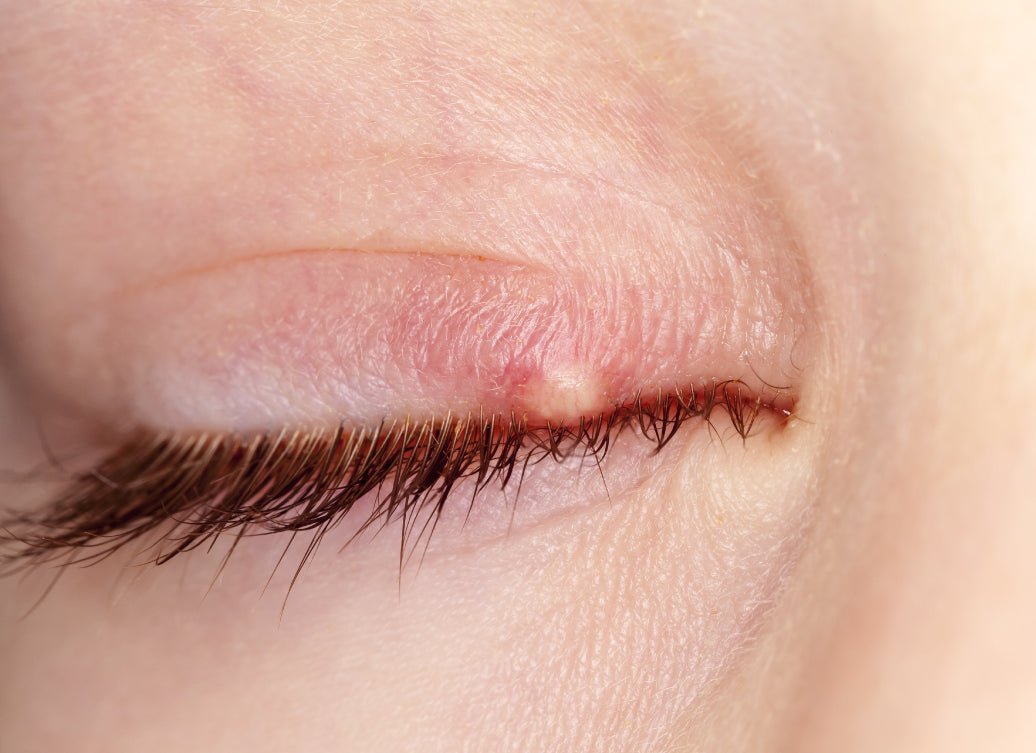What is blepharitis?
Blepharitis is a common and usually relatively mild inflammation that affects the eyelids. It’s a chronic condition, and tends to come and go in flares, when it’s sometimes better, and sometimes worse. There’s no one clear cause of blepharitis and no clear cure, but it can be managed with a bit of understanding about what triggers or aggravates a flare up.
Symptoms of blepharitis include: a gritty sensation in the eye; red, watery and irritated eyes; swollen and itchy eyelids; blurred vision; crusty eyelids; eyelashes falling out; dry eyes.
Causes of blepharitis include: having an inflammatory skin condition such as eczema, rosacea, seborrheic dermatitis or dandruff; contact with irritant ingredients in toiletries or cosmetics; a proliferation of mites, yeast or bacteria on the skin; blocked tear or oil ducts, or tear ducts that aren’t working properly.
What is a stye?
Sometimes known as a hordeolum, a stye is a small, painful, swollen lump on the eyelid. Some styes form on the outside of the eyelid, at the base of an eyelash follicle, while others form inside the inner eyelid, within an oil (meibomian) gland, and these tend to be more painful as they push on the eyeball as they develop.
Symptoms of a stye: a hard bump on the eyelid, swollen eyelids, discharge, light sensitivity, watery eyes or gritty sensations.
Causes of styes: styes are caused by the clogging up of tear ducts, hair follicles or oil-producing meibomian glands; these can get blocked up with pus, dead cells and debris, and trap bacteria inside, which then proliferates. The most common culprit is the staphylococcus bacteria.
What’s the link between the two conditions?
There’s definitely a connection between styes and blepharitis, but they’re not the same condition. Blepharitis is a chronic condition that can cause styes - styes are only one of several consequences of blepharitis. For example, blepharitis can also result in blurred vision and damage to the cornea, which aren’t the same as a stye. And not all cases of blepharitis involve styes, any more than all styes are connected with blepharitis.
If you develop a stye, consult a pharmacist or GP: you may need antibiotics to clear up the infection.
For more information about looking after inflamed eyelids and managing blepharitis, see our blog on blepharitis.
Recommended products:
Balmonds Skin Salvation
with hemp and beeswax
Balmonds Natural Shampoo & Body Wash
with calendula & chamomile
Balmonds Tea Tree Balm
balm with tea tree essential oil and beeswax
